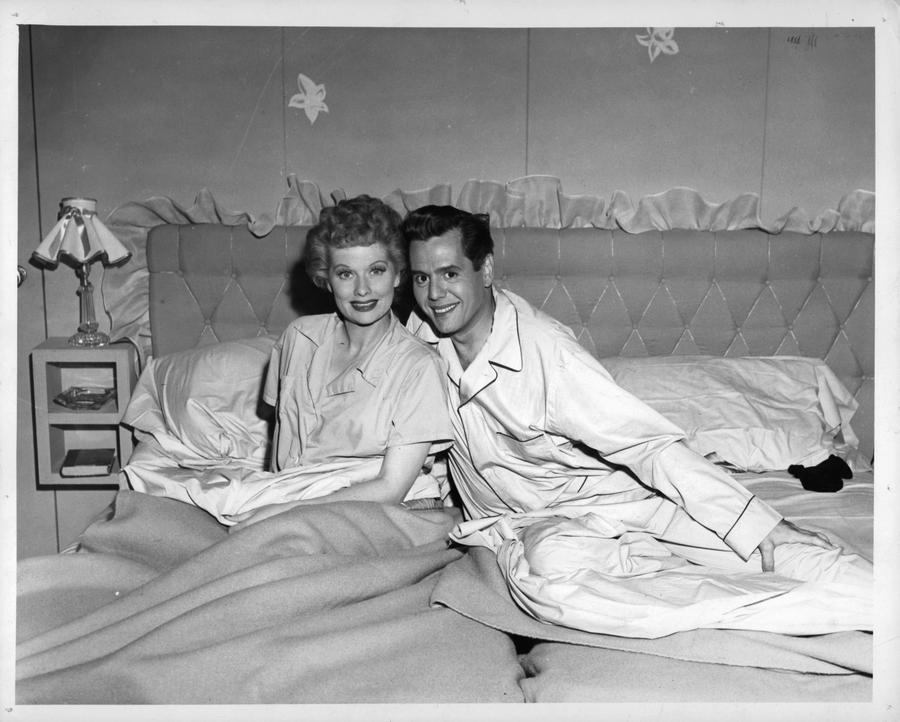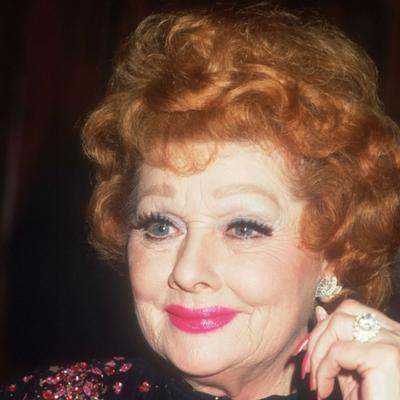Lucille Ball at a Glance
- Categories: Celebrities, Celebrities > Comedians
- Net Worth: $60 Million
- Birthdate: Aug 6, 1911 - Apr 26, 1989 (77 years old)
- Birthplace: Celoron
- Gender: Female
- Profession: Comedian, Model, Actor, Television producer, Singer
- Nationality: United States of America
- Height: 5 ft 7 in (1.71 m)
The Enduring Legacy of Lucille Ball: From Hollywood Starlet to Television Mogul
Lucille Ball’s Net Worth and Financial Success
Lucille Ball, a name synonymous with comedy and entertainment, left behind a legacy not only of laughter but also of shrewd business acumen. At the time of her death in 1989, her net worth was an impressive $60 million, which is equivalent to approximately $125 million today when adjusted for inflation. This financial success was a testament to her talent and business savvy, solidifying her position as a pioneer in the entertainment industry. Beyond her acting career, Ball’s understanding of the business side of Hollywood allowed her to build a financial empire.
A Challenging Childhood and Early Aspirations
Born on August 6, 1911, in Jamestown, New York, Lucille Ball’s early life was marked by instability and personal loss. Her father’s frequent job transfers with Bell Telephone disrupted her childhood. Further hardship came with the death of her father from typhoid fever when she was only three years old. Raised by her strict, Puritanical grandparents, Ball found solace and escape in the world of performance, starting at the age of twelve. She quickly fell in love with the theater, marking the beginning of her long journey to stardom. She attended the John Murray Anderson School for the Dramatic Arts in New York. One of her classmates was Bette Davis. Initially, she found some success on the New York theater scene but was forced to halt her acting pursuits for two years due to a bout of rheumatic fever.
Navigating Hollywood: Early Roles and Breakthroughs
Upon recovery, Lucille Ball returned to New York City in 1932, eager to resume her acting career. She supported herself with various jobs, including working as the Chesterfield cigarette girl. Although she gained some chorus work on Broadway, she was quickly fired. Her first uncredited film role was in 1933’s “Roman Scandals.” This led to her permanent move to Hollywood, where she aimed to achieve movie star status. Throughout the 1930s, she took on numerous small movie roles, including appearances with the Marx Brothers and in several musicals alongside Fred Astaire and Ginger Rogers. In 1936, Ball performed in the play “Hey Diddle Diddle,” a comedy set in a Hollywood duplex apartment. While she auditioned for “Gone with the Wind” in 1936, she ultimately lost the role to Vivien Leigh, who famously won an Oscar for her performance. In “Too Many Girls,” Ball met and fell in love with her co-star Desi Arnaz. To supplement her income and gain exposure, she also took on radio work. During the mid-1940s, Ball began securing more starring roles in films such as “Best Foot Forward,” “Lover Come Back,” and the murder mystery “Lured.”
“I Love Lucy”: A Television Revolution
The year 1948 marked a turning point in Lucille Ball’s career when she was cast as Liz Cooper in the CBS radio comedy “My Favorite Husband.” The show’s success paved the way for a television adaptation. Ball insisted on co-starring with her real-life husband, Desi Arnaz, a request that initially met with resistance from CBS executives. They were skeptical about the idea of an All-American redhead and a Cuban as a couple on television. After CBS was unimpressed with the pilot episode, the couple showcased their act as a successful vaudeville show. Ball’s portrayal of a “zany housewife” trying to get on Arnaz’s show resonated with audiences and led to CBS green-lighting “I Love Lucy.”
“I Love Lucy” became an instant sensation, transforming Ball and Arnaz into household names. For Ball, the show presented an opportunity to strengthen her marriage, which had become strained by their busy schedules and Desi’s wandering eye. Beyond her acting role, Ball made history as the first woman to head a TV production company, Desilu, which she formed with Arnaz. The production company pioneered innovative methods, such as filming before a live studio audience, that are still in use today. During breaks in production, the couple also starred in two feature films together: 1954’s “The Long, Long Trailer” and 1956’s “Forever Darling.” Desilu later produced several other successful shows, including “The Untouchables,” “Star Trek,” and “Mission: Impossible.”
“I Love Lucy” dominated the U.S. television ratings for the majority of its six-season, 180-episode run. It was the most-watched show in the United States in four of its six seasons, ending its run at the top of the Nielsen ratings. The show’s episodes have been syndicated in dozens of languages worldwide. After the series ended, modified versions of the show, such as “The Lucille Ball-Desi Arnaz Show” and the “Lucy-Desi Comedy Hour,” ran for three more seasons from 1957 to 1960. Often hailed as one of the greatest and most influential sitcoms in television history, “I Love Lucy” remains a timeless classic.

(Photo by CBS/Getty Images)
Desilu Productions: Pioneering Television
In 1950, Desi and Lucille established Desilu Productions, initially to produce their vaudeville act. Ball managed the creative aspects, while Arnaz oversaw the business side. Arnaz, a Cuban immigrant with limited business experience, displayed an extraordinary understanding of production finances. For example, he requested a season’s worth of production costs for the first episode rather than spreading the costs out, sticking to the budget, a decision that made the show cost-effective compared to others at the time. His most remarkable decision was to insist on the use of film across the country for syndication instead of a lower-quality medium called kinescope. Although studio executives balked at the expense, Arnaz’s genius lay in negotiating to have the couple own the physical film prints and therefore, the re-broadcast rights. This decision would later bring the couple a massive fortune when the show became the most popular syndicated program ever. This is considered one of the most astute business deals in television history.
In 1957, CBS bought back the rights to the show’s 180 episodes for $4.5 million, equivalent to around $40 million today. This was a strategic and profitable move for the network, as they continue to earn over $20 million annually from “I Love Lucy” re-runs. With the money from the sale, Lucille and Desi purchased a new studio lot in 1957, paying $6 million for RKO Studios. Lucille was now officially the first major female production mogul. Desilu produced numerous hit shows, including “The Untouchables,” “The Ann Sothern Show,” and “Sheriff of Cochise.” The studio lot also hosted productions of “The Dick Van Dyke Show,” “The Andy Griffith Show,” “My Three Sons,” and many more.
Desilu went public in 1958, with over 800 employees and annual revenue of more than $20 million. Lucille and Desi divorced in 1960, and in 1962, Lucille purchased Desi’s shares in the company for $2.5 million, which is equivalent to approximately $20 million today. Lucille took on a more hands-on role in the production and creative aspects of the business. She gave the green light to Gene Roddenberry’s “Star Trek,” giving Roddenberry the resources to film a pilot episode called “The Cage.” Despite NBC’s initial rejection of the pilot, Lucille encouraged Roddenberry to produce a second pilot, this time starring William Shatner. The rest, as they say, is history. Ball also green-lit “Mission Impossible.” In 1967, Lucille sold Desilu to Gulf+Western for $17 million, equivalent to $130 million today. Gulf+Western then transformed Desilu into a production division of Paramount Pictures, later renamed Paramount Studios.

Getty Images
Life Beyond “Lucy”: Continuing Success and Final Years
After “I Love Lucy,” Lucille Ball starred in the 1960 Broadway musical “Wildcats,” though the show closed early due to her illness. She hosted the CBS Radio talk show “Let’s Talk to Lucy” from 1964 to 1965. She continued to make a few movie appearances and then starred in two more successful CBS sitcoms: “The Lucy Show,” which aired from 1962 to 1968, and “Here’s Lucy,” which featured her real-life children, Lucie and Desi Arnaz Jr. “Here’s Lucy” ran from 1968 to 1974. Ball was the lead actress in many comedy TV specials until 1980. In 1979, she became an assistant professor at California State University in Northridge, teaching comedy courses.
During the mid-1980s, Ball tried to revive her television career. She starred in a dramatic made-for-TV movie in 1985, “Stone Pillow,” in which she played an elderly homeless woman. Her 1986 sitcom comeback “Life With Lucy,” produced by Aaron Spelling, was canceled less than two months into its ABC run. Ball’s final public appearance was just one month before her death, at the 1989 Academy Awards telecast. She and her fellow presenter, Bob Hope, received a standing ovation. Lucille Ball died on April 26, 1989, from a ruptured abdominal aortic aneurysm, following unrelated heart surgery she had undergone a week earlier. She was 77 years old.
Love, Marriage, and Family: The Personal Side of a Public Icon
In 1944, Ball filed for divorce from Arnaz; however, the couple reconciled shortly after, and Lucille gave birth to their daughter, Lucie, in July 1951. Their second child, Desi Arnaz Jr., was born in January 1953. Though they divorced in May 1960, they remained close friends and collaborators. They often spoke fondly of each other in public. Lucille visited Desi a week before his death in 1986.
In 1961, Ball married her second husband, Gary Morton, and they remained married until her death in 1989. Her personal life, like her professional one, was marked by both triumph and challenge, contributing to the multi-faceted image of a woman who redefined comedy and entertainment.
Career Earnings
| Source / Title | Amount |
|---|---|
| Life with Lucy | $150 Thousand/episode |
| Mame | $250 Thousand |
| Yours, Mine and Ours | 50% of profit |
| A Guide for the Married Man | $10 Thousand/day |
| The Lucy Show | $15 Thousand/episode |
| The Danny Kaye Show with Lucille Ball | $100 Thousand |
| The Long, Long Trailer | $125 Thousand |
| I Love Lucy | $3.5 Thousand/episode |
| The Magic Carpet | $85 Thousand |
| Two Smart People | $1.8 Thousand/week |
| The Big Street | $3.5 Thousand/week |
| A Girl, a Guy, and a Gob | $12.5 Thousand |
| Too Many Girls | $1.5 Thousand/week |
| Dance, Girl, Dance | $3.5 Thousand/week |
| Go Chase Yourself | $2 Thousand/week |
| Don't Tell the Wife | $2 Thousand/week |
| Top Hat | $50/week |
| Total Earnings | $765.3 Thousand |

